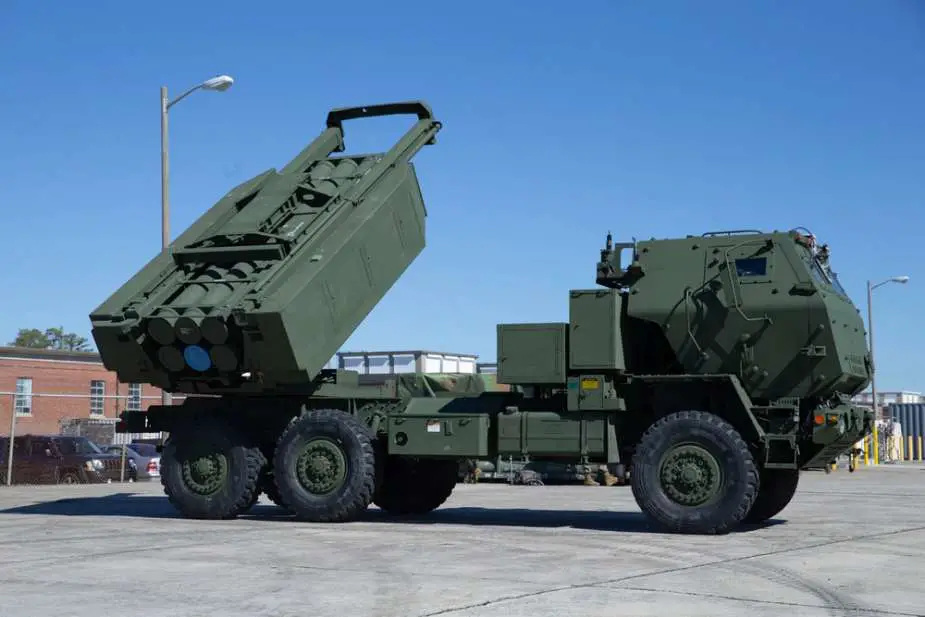Breaking news
Baltic States unite as Latvia adopts US HIMARS rocket launchers.
On October 24, 2023, the US State Department approved a potential Foreign Military Sale to the Government of Latvia, enabling the acquisition of M142 High Mobility Artillery Rocket Systems (HIMARS) and related equipment at an estimated cost of $220 million, bringing notable developments to the Baltic region. This marks Latvia's inclusion in the group of nations possessing HIMARS rocket launchers, alongside the other Baltic States, Estonia, and Lithuania, which acquired these systems in 2022.
Follow Army Recognition on Google News at this link

An M142 High Mobility Artillery Rocket System (M142 HIMARS) at Camp Lejeune, North Carolina, in 2021 (Picture source: US DoD)
Latvia's request includes six HIMARS launchers, twelve M30A2 Guided Multiple Launch Rocket System (GMLRS) Alternative Warhead (AW) Pods with Insensitive Munitions Propulsion System (IMPS), twelve M31A2 GMLRS Unitary (GMLRS-U) High Explosive Pods with IMPS, and ten M57 Army Tactical Missile System (ATACMS) Pods. The package also covers Reduced Range Practice Rocket (RRPR) Pods, intercom systems for HIMARS Launcher support, ruggedized laptops, training and training equipment, publications on HIMARS and munitions, spare parts, as well as program and logistic support. The overall estimated cost for this program is $220 million.
The M142 High Mobility Artillery Rocket System (HIMARS) stands as a central component in this foreign military sale. Developed by Lockheed Martin Missiles and Fire Control, this mobile rocket launcher system, mounted on a 6x6 FMTV truck chassis, has been operational since its introduction in 1996. The HIMARS is versatile, offering rapid-fire artillery support and engaging a variety of targets, including enemy artillery and air defense concentrations, vehicular threats, light armor, and personnel carriers. It also plays a role in supporting troop and supply concentrations. HIMARS is capable of launching guided rockets and tactical ballistic missiles.
The HIMARS is known for its mobility, allowing it to quickly relocate after firing to evade enemy detection and counterattacks. Built upon the Multiple Launch Rocket System (MLRS) platform, it is mounted on a wheeled chassis, integrating with the Family of Medium Tactical Vehicles (FMTV) 5-ton truck. The HIMARS has the flexibility to accommodate either a single six-pack of rockets or a single ATACMS missile, and it can launch the complete MLRS family of munitions. Operational efficiency is ensured by a crew of three, consisting of a driver, gunner, and section chief, but the system can be operated by as few as two individuals and, at times, even a single soldier, thanks to its computer-based fire control system.
The M142 HIMARS has received approval for production and has been in Full-Rate Production since March 2003. The system completed its initial operational test and evaluation in November 2004 and has seen combat service in various operations. It achieved joint recognition when the U.S. Marine Corps joined the program in 2000.
Its armament capabilities are noteworthy, capable of launching a wide range of munitions, including the standard MLRS round, extended-range rockets, and tactical missiles with ranges reaching up to 300 km. The crew cabin features armor plating to protect against small arms fire and artillery shell fragments. HIMARS is transportable via C-130 aircraft, expanding deployment options, and is equipped with a self-loading and autonomous system, complemented by a sophisticated fire control system that allows firing missions to be carried out in automatic or manual mode. With a maximum road speed of 85 km/h, the M142 HIMARS is designed for rapid response and flexibility.


























